Newsroom
Strada — Striving to Be the First in the Industry
Since its debut in 2003, Panasonic's Strada has played a part in the history of car navigation systems. We interviewed members of Strada’s development and promotion teams to find out why the Strada has achieved so many firsts in the industry.

Using Adversity to Develop New Products
In 2013, after the boom for terrestrial digital televisions in Japan had ended, the car navigation system commercial business was in crisis. We had been unable to introduce a lineup of appealing products in the car navigation system market, which is subject to intense competition and undergoing the process of commoditization. It was under these circumstances that we launched a workshop aimed at developing completely new products that would be useful for customers. This workshop saw the participation of employees, including many young employees, from a variety of departments including sales, product planning, and design.

“There was a shared sense of danger, not just among company management, but also among employees on the ground. Although each department would deal with problems individually until that time, the persons in charge would organically consider new products by pooling their expertise, which had the effect of enhancing the appeal of our products.” said Mr. Mukoda, who had been involved in new product development as a member of product planning at the time.
“The consistent concept of the Strada F series is ‘a large screen for everyone's car.’ After reconsidering what kinds of problems users of car navigation systems faced, we continued our search for a new product by aiming to create a new navigation system that was large, easy to see, and that could be installed in any car. Although it had been standard for car navigation systems to fit into the car’s 7-inch space at the time, by first focusing on eliminating this size constraint, we developed a floating structure in which the display is installed to float separately from the main unit.”
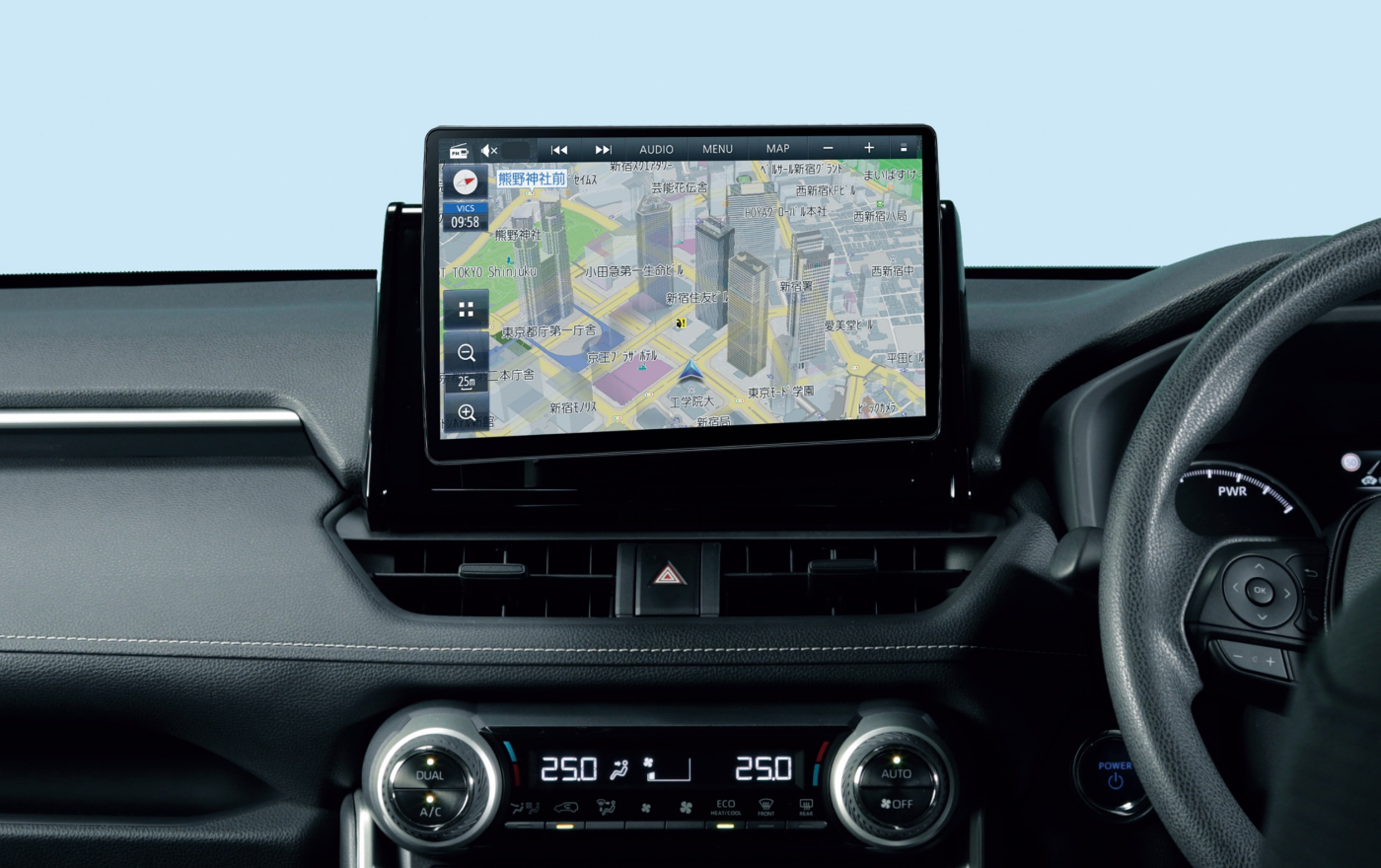
Our company’s culture, in which all departments work together to develop new products, started with the danger our business faced, and led to the development of the floating structure that shattered the norms of the commercial car navigation system industry, which, in turn, led to the subsequent development of the first car navigation system equipped with an OLED screen.
Returning to the Philosophy of “the Customer Comes First”
We spoke with one of the engineers involved in the development of the two features that changed the histories of both Strada and the industry, namely its floating structure and OLED screen.
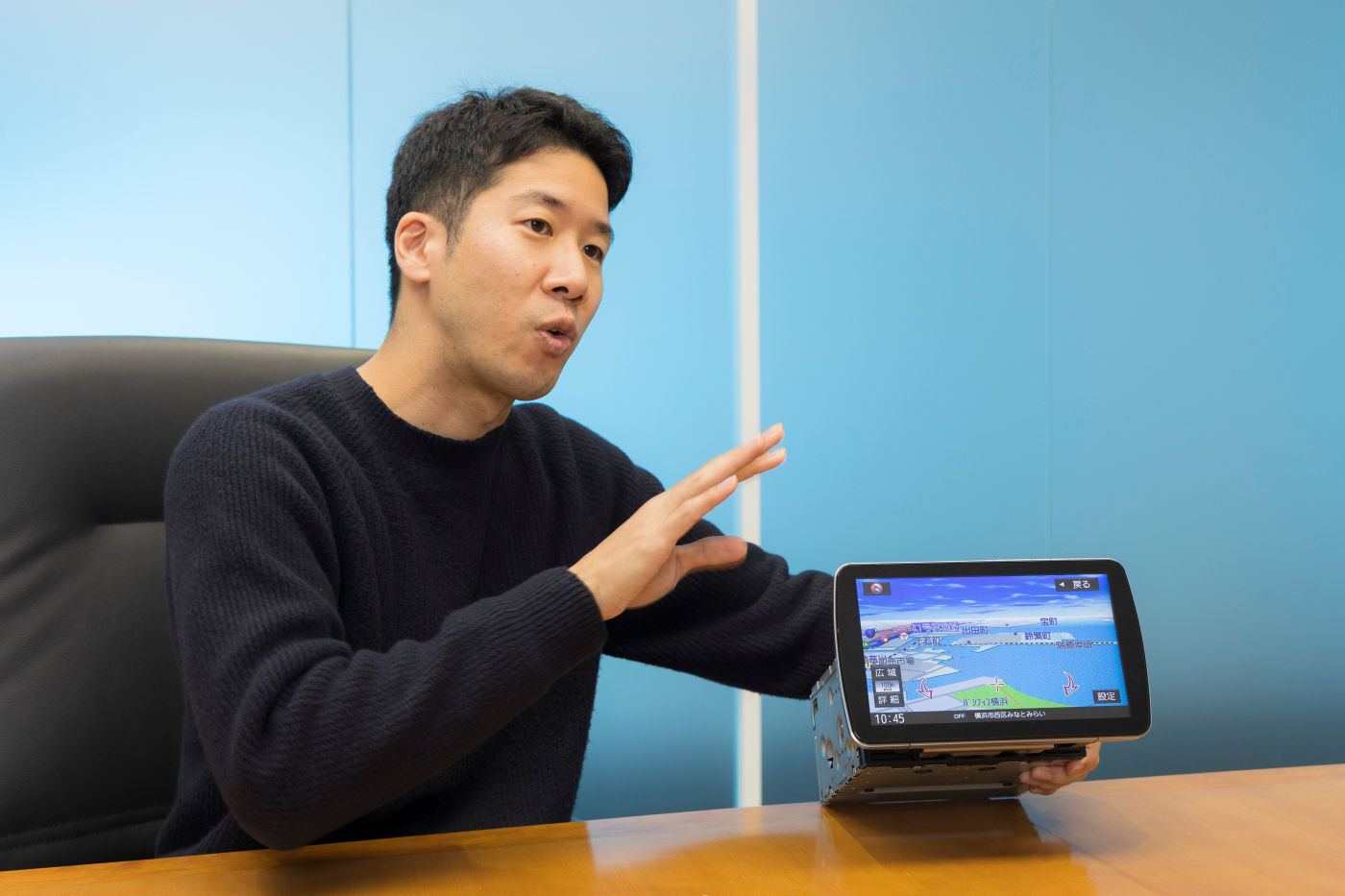
Mr. Yamazaki, who was charged with designing the floating structure, was appointed leader of mechanical development in his third year with our company. At the time, Panasonic's philosophy served as the basis for its development.
“In developing the floating structure, we thought up the product by returning to Panasonic's philosophy of ‘the customer comes first.’ We gave serious consideration to what kinds of problems our customers faced, which is the most important thing and the foundation for development. Until the release of the F series, only a very limited number of vehicle models could be equipped with a large-screen car navigation system. Unless customers owned one of these specific vehicles, they didn’t have the option of installing a large screen, even if they had wanted to. Although large screens were in demand, there were few vehicles in which such large screens can be installed. Our idea of the floating structure was born from our desire to overcome this dichotomy and find solutions to the problems faced by customers. Also, based on my experience of actually selling products at stores during my training immediately after joining the company, I wanted the products I was involved in developing to be those that I myself would be highly enthusiastic about selling to customers. Our sales slogan, ‘Featuring a large screen that can be installed in your car’, is simple and easy to understand, and I think has made it a product that retailers are easy to sell. The concept of ‘being able to be installed in any car’ also relieves retailers of the burden of keeping inventory on hand for each car model. In this way, we aimed to make Strada navigation systems into a product that would also please the people responsible for them.”
However, there appear to have been many challenges when developing this completely new mechanism.
“All development on this product was performed from scratch, and designing a car navigation system with a floating structure was completely unknown territory for us. When mocking up the design, we tried various configurations in vehicles in a frantic search to find a design that would suit any vehicle. No matter how much I failed as a novice engineer during the development process, my colleagues assisting in the process stayed positive and helped me without complaining. Everyone from the managers of our commercial car navigation system business to younger employees such as myself worked on the development process as a team while sharing the same desire to create an interesting product.”

After adopting the floating structure, it was the OLED model that next redefined the norms of the industry. Though OLED screens are becoming more common in home televisions, using them for car navigation systems proved to be a difficult task. OLED screens are appealing for their thin profile and attractive appearance, but they are vulnerable to temperature, humidity, and UV exposure, so it seemed difficult to apply them to car navigation systems that are exposed to harsh environments such as scorching summer heat.

“Although OLED screens have many advantages, they are somewhat fragile. Coming up with ways to counter overheating and burn-in* were major issues when using them for car navigation systems,” says Mr. Nakagawa, who was involved in the development of the OLED panels and who played a significant role in the development of new products that were first in this industry. When attempting to introduce OLED displays, other employees who had played a role in developing Panasonic’s OLED televisions provided a great deal of assistance.
“Our company’s strengths are having various technologies and expertise, and being able to rely on the assistance of other employees who have developed various products. By collaborating closely with them, we were able to apply expertise gained through the development of televisions. To prevent burn-in, we devised a novel screen display method and adopted a honeycomb structure that let us strengthen the structure and provide a countermeasure to heat. Although a major reason for our success in achieving a car navigation system with an OLED screen was the hard work of the members of our development team, I feel that Panasonic’s involvement in a broad range of businesses is another reason why success was possible.”
* Refers to the appearance of afterimages, panel discoloration, etc.
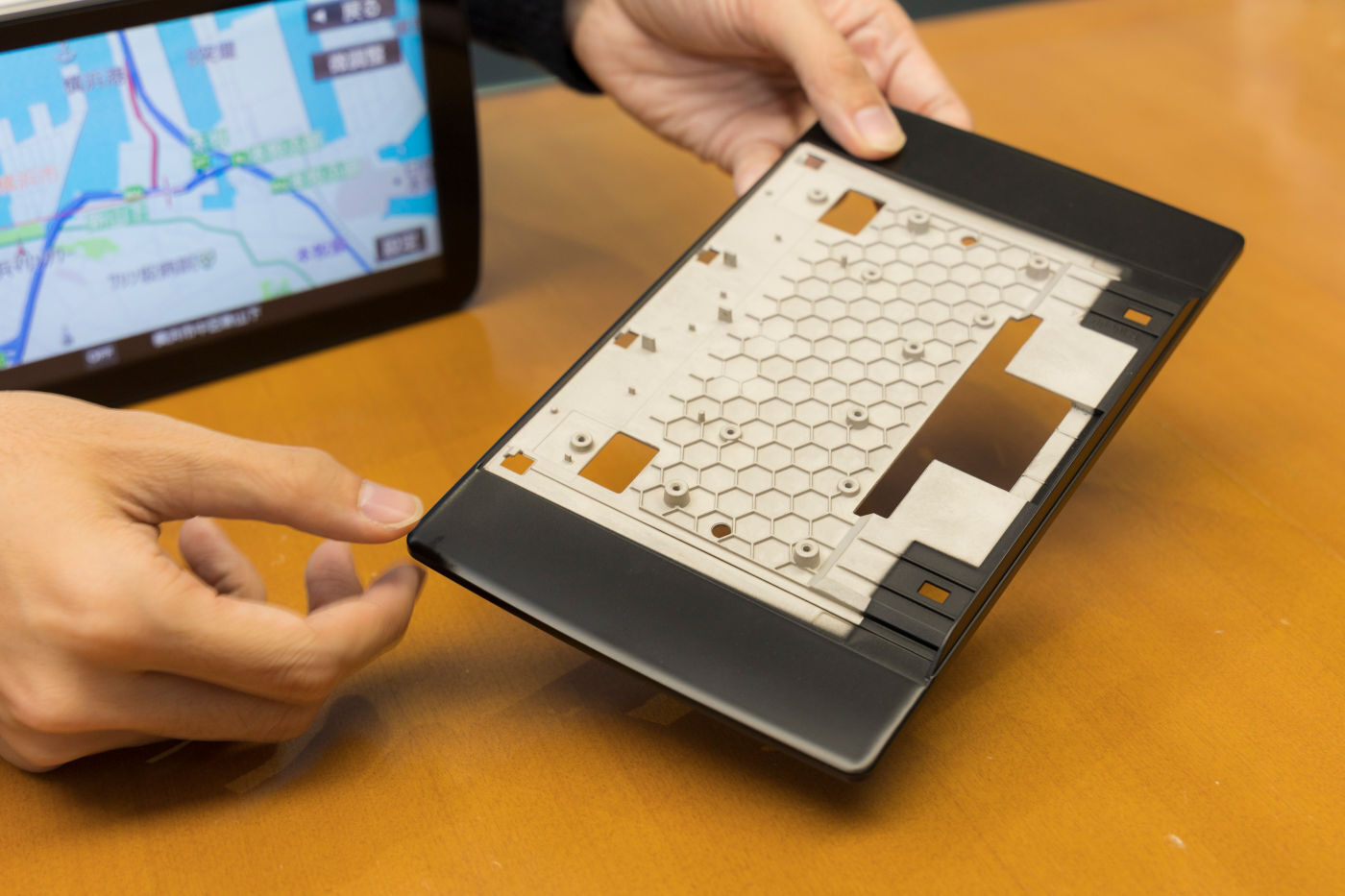
Good Products Are Meaningless if Customers Don’t Know About Them
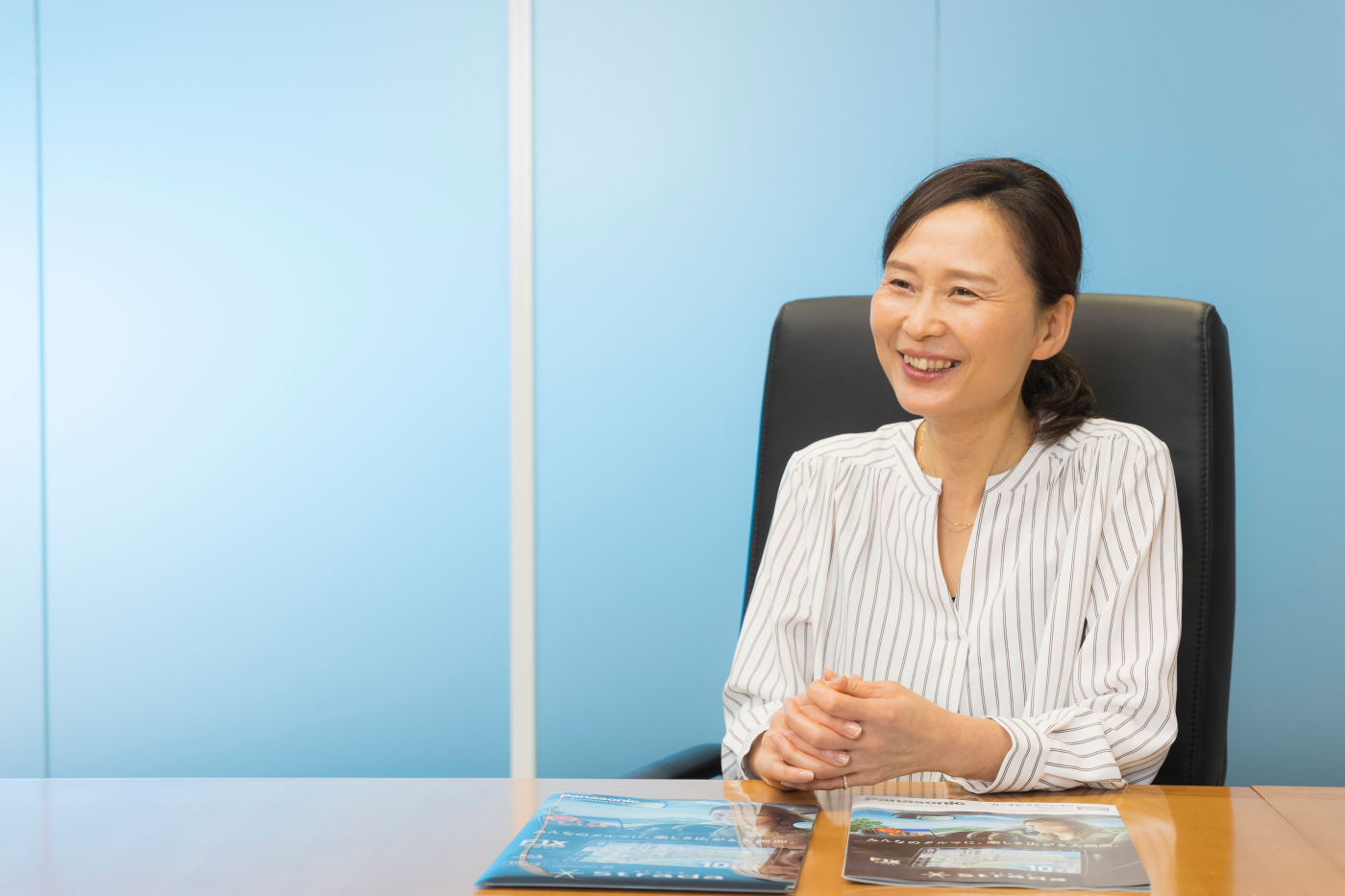
Ms. Nagashima has been in charge of advertising for Strada for many years and is one of the people who has continued to spread the appeal of Strada products throughout the market.
“When developing the Strada, we work together with other departments such as product planning to create key visuals. After all, good products are meaningless if customers don’t know about them. I feel that Strada's strengths are being demonstrated, not only through its promotion, but also by our working together as a team in considering how to convey the appeal of the product.”
Ms. Nagashima says that she values not only digital content and advertising media, but also chances to communicate directly with users.
“Although advertisements such as commercials, as well as SNS, are very effective means of promoting products, it is equally important for us to participate in actual events held by media on car-related topics and to have customers experience the appeal of our products in a manner that surprises them and leaves an impression. A lot of information can only be expressed through live exchanges like these. The feedback we get from customers is really valuable and helps us to improve our products, while also enhancing the motivation of our employees working in development. Being involved in exchanges like this also enhances my motivation.”
First and Foremost, “Let’s Do It Because It’s Interesting”

What is the secret behind creating many products that are firsts in the industry? Mr. Nakagawa mentioned the company's way of thinking.
“Our company culture is one in which project members say, ‘Let's do it because it's interesting’, and then work together. When attempting new things, many things must be confirmed and there is a lot of risk.
Normally, people don't want to take risks, but instead, want to work on things that are easy to develop. This is why designers normally don’t like making changes. However, employees at our company who develop car navigation systems place importance on whether something is interesting or not. I feel that the support we receive from management is a major factor, and that our work environment is one that makes it very easy to take on challenges.”
Mr. Yamazaki continues by saying, “The employees of our commercial business are great at self-promotion. Employees are always free to speak out about what they want to do. If you can communicate your thoughts about what you want to do, you will naturally gather allies and more consideration will be given to your desires. In that sense, I think we work in an environment where new ideas can easily grow.”
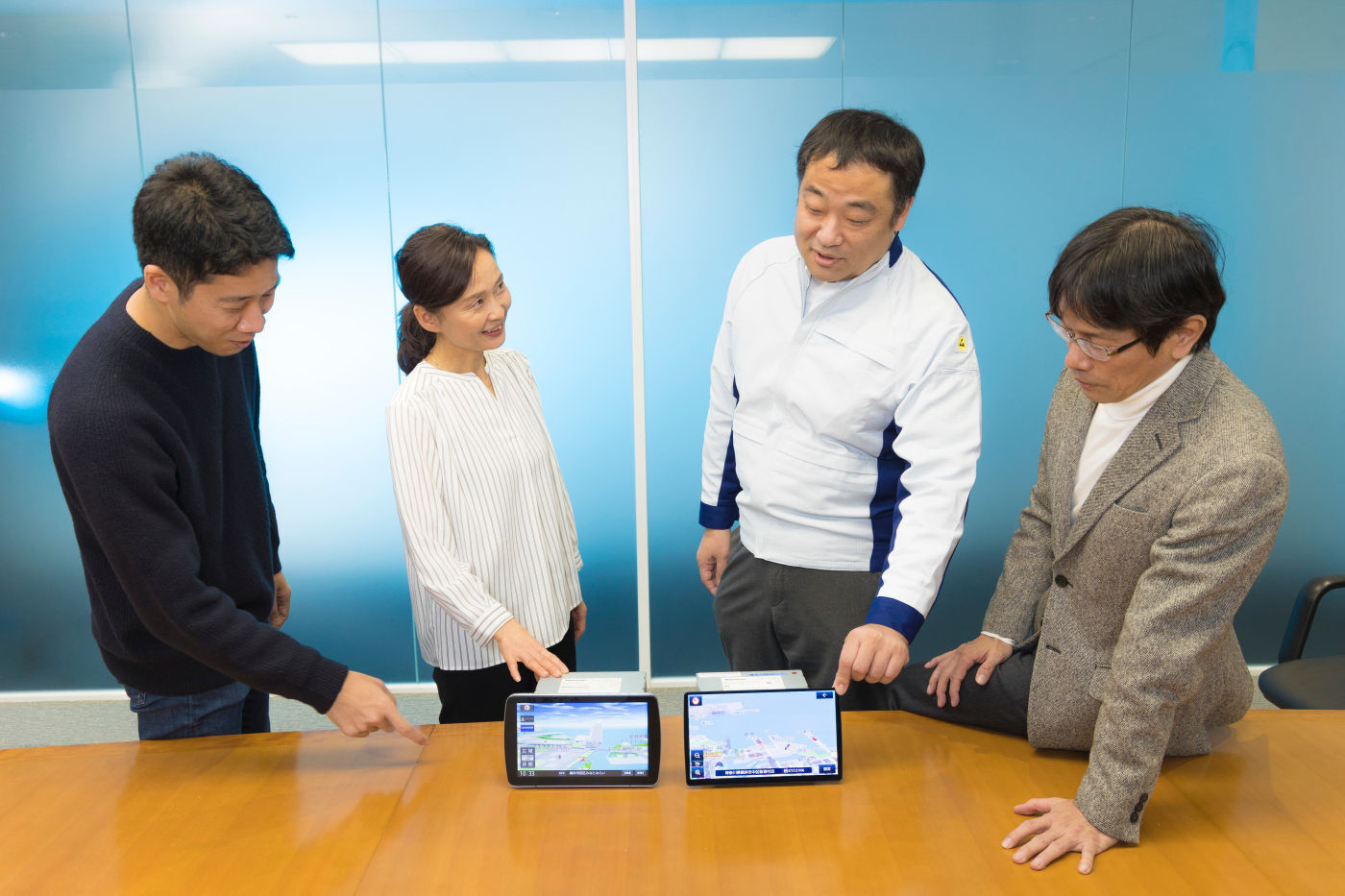
All departments work together to conceive products while prioritizing how to undertake interesting development, instead of just focusing on risk. Armed with this culture, Panasonic's car navigation systems will continue to evolve under our philosophy of “the customer comes first”.
